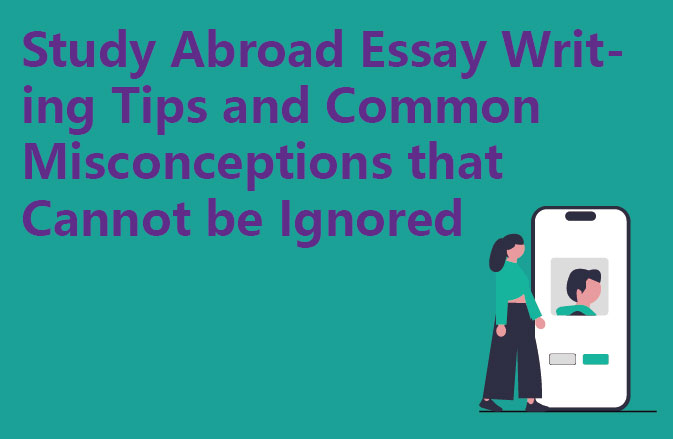The first step is to determine the topic of the paper
Broadly speaking, choose any topic within the scope of the profession can write something, as long as you have a new point of view, new discoveries, new perspectives, new research methods, new materials and so on. But this latter “five new” greatly limits the choice of thesis topics. This is because most of the authors are the first time to write such a long academic paper, lack of experience, but also lack of deep knowledge accumulation, it is difficult to grasp; at the same time, two or three million words of this condition is also a great constraint on the selection of the topic, if the topic is too large, can not be developed in this relatively small scope. Therefore, whether the topic is properly selected has a great influence on the success of the dissertation, and it is even said that a good topic selection is equal to half of the success. According to the experience of many dissertations in selecting topics, the selection of topics for this level of dissertation can be considered from the following aspects: research gaps in the field, controversial topics (one’s own viewpoints feel more adequate), contrasting topics, the study of topics in the field from the perspective of other professions (this is a kind of marginal effect of the selection of the topic), there are new insertion angles of the old topics, just emerged in the profession of the new issues.
The second step, literature search
This is actually a review of relevant theories and research around the topic that has been identified for the dissertation. This step is more strenuous and requires mental preparation. This step is necessary, if there is no this step, the content of your paper is likely to repeat the work that others have done, equal to do in vain; find the process, but also to inspire ideas, the process of generating sparks of viewpoints, do not take this step, is equal to pinch off the source of their own new ideas, new perspectives, new materials. This is also for the next step to do viewpoints, perspectives, materials on the preparation.
The third step, the theoretical assumptions of the selected topic, or the specific problem to be studied
Selection of the topic refers to the general direction and scope of the paper to be written, really want to do the writing, you will encounter two types of specific problems. The first category belongs to the point of view aspect: what is my specific point of view? You can envisage one or several points of view, but they are merely hypotheses, over many evidences, materials, proving that your hypotheses are valid through rigorous argumentation and proper structure of the argumentative framework, which can form the main body of the paper. The second category belongs to the practical side: I am going to argue specifically? Prove that you can what to ask the question out of many causes, the impact of various environmental conditions, whether they are relevant to the issue being argued, and to what extent, which requires scientific investigation and analysis. In either case, this relates to the central idea or argumentative theme of the paper, which must be clear and consistent throughout the paper. Some authors are unable to grasp the whole text and write invariably away from their originally identified hypothesis or specific question, saying much that is not relevant to the central idea or argumentative theme.
The fourth step, the research methodology decision
Humanities and social sciences research methods can be broadly categorised into two categories, discursive research and empirical research, the latter can be divided into qualitative research, quantitative research two specific research methods. People use different research orientations in order to investigate social facts or social phenomena, and different research orientations have different research methods, different research assumptions, ways of collecting information and standards of judgement on the results. But various research methods have been increasingly showing compatibility and intrinsic connection in thesis writing nowadays. Generally speaking, depending on the topic of your choice and the specific issue to be discussed, you can focus on one research method and supplement it with others. For example, if you study the situation of “human beings” as the recipients of mass media information, this research orientation determines that the research itself should be based on quantitative analyses, but at the same time, it also needs some historical, cultural, political economy and discursive research.
The fifth step is to design the framework structure of the essay
This step is also required for writing articles in general, but it is more necessary for dissertations, and its requirements are a bit more detailed. Generally, a dissertation should have an introductory chapter, an introductory first chapter, a main body chapter, and a conclusion. The setting of the chapter should have a general layout logic before writing, so that it is well structured; chapter and chapter have a logical connection between them, to prevent blindly writing, drowning the subject, do not know what to do. This step is seldom completed at once, often according to the collection of materials, survey visits encountered in the new situation, often change. But like an architect in building a house must have drawings before, to write a paper on this level, the general framework of the article can not just store in the brain, generally to form the text, relatively detailed, specific to the “section” is better (but “section” of the level of the beginning of the (but “section” level at the beginning do not fix), easy to write in mind. To the design of the dissertation framework step, because there is a written chapter design, in addition to the tutor’s guidance, this is a good opportunity to consult with other experts in a wider range of opinions before the formal writing. The framework is not yet a thick dissertation, and it takes little time to look at it, and again you can get a general idea of the value or problems of the essay. At this time to modify the structure of the paper than after the writing of the revision is much easier, easier, and more generous time, do not miss this opportunity.
Sixth step, analysis, classification, will be filled into the paper parts, and then to explain, argumentation
This is actually the essay writing itself, so it is described in this way with the intention that the writer understands the process of essay writing. Various materials and arguments are not inherently capable of proving a thesis or illustrating a specific issue, but need to be organised and argued by the writer in order to make them come to life and serve the topic they are arguing about extremely naturally and powerfully. In this step, you need to review the knowledge of logic or social research statistics, with the correct logical thinking and rigorous data organisation, closely around the theoretical assumptions or specific issues that have been identified, to mobilise all kinds of knowledge, through the positive (which is the main), negative, set up the argument, refute the argument, the metaphorical argument and so on, to argue for the point of view or the problem, to draw conclusions, to complete the dissertation. Problems with the use or lack of materials, logical reasoning, mismatches between arguments and thesis, and so on, will surely arise in the argumentation, requiring a stop to find more materials and visit experts to enrich or reduce the content of the original framework of the thesis, and, if necessary, to make partial adjustments to the structure of the framework. This situation is normal and often happens. In terms of time arrangement, this should be planned. If the time arrangement is not appropriate, sometimes the thesis is lost because the writing schedule is too tight to adjust the structure of the thesis, which is not worth it.
The seventh step, if necessary, re-estimate the topic, amend the scope of the object of argumentation
This is another situation that occurs at the same time with the sixth step, that is, through more extensive consultation and my thinking, I feel that the original selection of the topic is inappropriate, or difficult to complete, then we must promptly adjust the entire thesis writing programme, change the selection of the topic. This situation is normal, the key is not to hesitate for a long period of time, but to make a decision quickly so that there is time to start again. Since you have already done a lot of thinking and literature searching on the academic research in your field, even if you change the topic and start over, it will not take much time, and it is not necessary to worry about it too much. Inappropriate choice of topic, difficult to complete another situation does not lie in the choice of the topic itself, but in the choice of the topic of the argument is too large. It is not difficult to solve this problem by narrowing the scope of the object of the argument. The biggest obstacle here is the writer’s inability to “cut the cord”, spend a lot of effort to prepare the paper, once many materials can not be used, it is difficult to part with. This, of course, involves redesigning the structure of the paper. However, it is always easier to narrow down the scope of a larger argument than the other way round.
Step 8: Checking and Adjusting Normalisation
In the text of the citation mark, notes and numbering, the literature after the reference to the literature arrangement, as well as does not belong to the thesis itself (including the reference to the English synopsis), key words, etc., should be in accordance with the standardisation of the requirements for checking and adjusting. Although these are technical issues, but also reflects the author’s attitude of governance. Especially the citation, wherever the views of others are used, the source of the material must be indicated, not ambiguous, not to mention the research results of others into their own. Marked material sources should also be very clear, the name of the treatise, the author or editor, the publisher or published in the name of the journal, published or published time, etc., all of them




